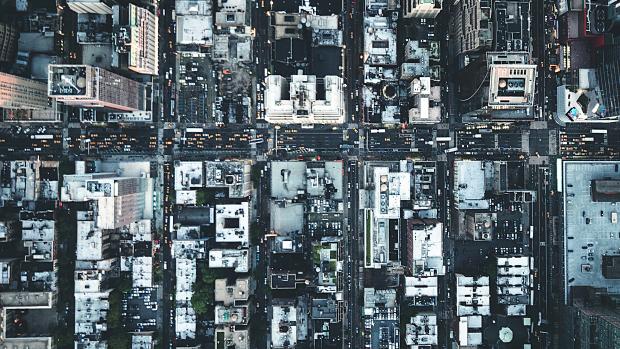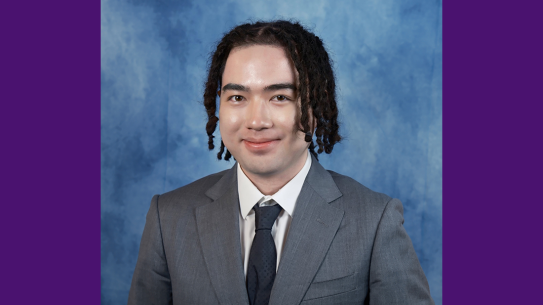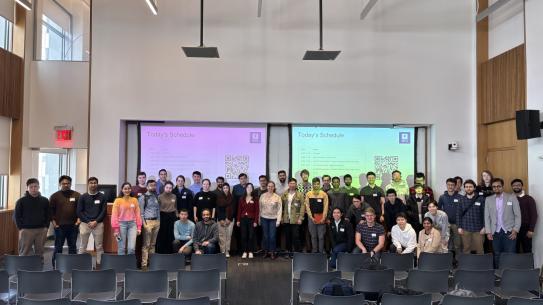C2SMART paves a path forward for transportation in a post-pandemic world at TRB 2021

To see the future of transportation, look no further than the annual meeting of the Transportation Research Board (TRB). The event typically brings together 14,000 transportation experts and practitioners from around the world to discuss emerging trends in transportation and infrastructure, with an eye to the future of how we get from point A to point B.
At this year’s TRB, C2SMART once again made their mark. The center had 112 faculty, postdocs and students performing 53 presentations, covering everything from how ridesharing technology affects mass transportation usage to the cultural perceptions of autonomous vehicles and how that affects their adoption.
As might be expected, many of the most important issues addressed at the conference were COVID-related. As the pandemic continues to deeply affect the fabric of urban life, researchers are continuing to address how it has affected the ways that people interact with urban environments, and how it may change as life begins to return to something approaching normal. The papers, presentations and posters represented C2SMART’s impressive ability to shift and realign their research focus to reflect unforeseen challenges like the pandemic.
For example, C2SMART engineers took a hard look at one of the most consistent public health messages since the pandemic began — social distancing. As research has made clear, vaccinations may not be enough to defeat the virus — preventive measures like masks and distancing are still the best weapons we have to stop the spread of COVID-19 in the short term. But how much social distancing are people really doing after the initial push?
To investigate crowd density and the effectiveness of social distancing strategies, C2SMART researchers introduced a low-cost, AI-driven big data acquisition framework leveraging hundreds of traffic cameras along with a deep learning-based video processing method. Object detection and distance approximation between pedestrian pairs were applied to traffic camera videos at multiple NYC and Seattle locations to analyze local social distancing patterns.
The findings from only a few months into the pandemic were surprising: a gradual increase in pedestrian density had been observed in multiple locations in NYC in the last two weeks of May. It was observed that the average percentage of pedestrians following social distancing guidelines of 6 feet apart at select locations dropped slightly from 91% on Apr 2 to 86% on May 27. At 5th Avenue and 42nd Street, while density observed from cameras remained low, peak hour spikes in car and pedestrian density began to emerge in May. Meanwhile, cyclist density had almost approached pre-pandemic levels at this location.
Kaan Ozbay, director of the center, presented findings from this framework as a part of “Applications of Machine Learning to Transportation” — one of the most-viewed sessions of the conference and the most popular in the data category.
The effects of COVID on the availability and reliability of transportation were also profound. With changed travel demand, economic activity, and social-distancing/stay-at-home policies, transportation systems have experienced an unprecedented shift in demand and usage. Since the start of the pandemic, the C2SMART research team has been collecting data and investigating the impact of COVID-19 on mobility.
This research has led to the development of a one-of-a-kind open-source dynamic dashboard of all available transportation datasets showing the impact of the pandemic on NYC (and select other cities’) transportation systems. This dashboard was developed in-house and was made available to the public in early Spring 2020, and researchers have continued to update/maintain it to date.
It is the only known comprehensive, open-source dashboard in the country and has attracted attention from all transportation agencies in and outside of New York. Efforts are underway to build active partnerships across NY agencies and with other cities/states to expand data sets.
Another presented tool, MATSim-NYC, was used to predict the impact of closing and reopening strategies on transportation systems, and specifically for transit. It provides the ability to simulate various scenarios for reopening and how it will affect transportation infrastructure in NYC, reflecting current plans by the governor’s office and taking into account the aversion to public transportation as a possible disease vector. The simulation tool can be used by government officials to foresee any issues that may arise when specific industries and services open up.
Beyond the presentations, several researchers from NYU Tandon also received accolades at TRB. Deputy Director Joseph Chow received a "Highest Overall Score Award" from the TRB ACH20 Bike Transportation Committee for a C2SMART project that used bike count data from the New York City Department of Transportation. Haoran Su, a student researcher with C2SMART, was recognized with the prestigious Dwight D. Eisenhower Transportation Fellowship, a program that benefits the transportation workforce by attracting the nation’s brightest minds to the field of transportation, encouraging future transportation professionals to seek advanced degrees, and helping to retain top talent in the U.S. transportation industry.


